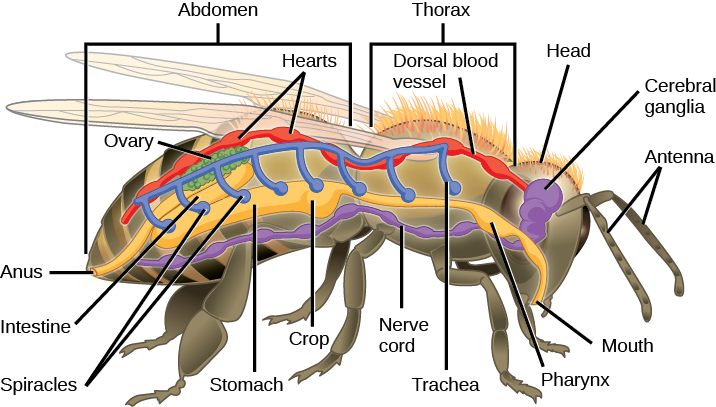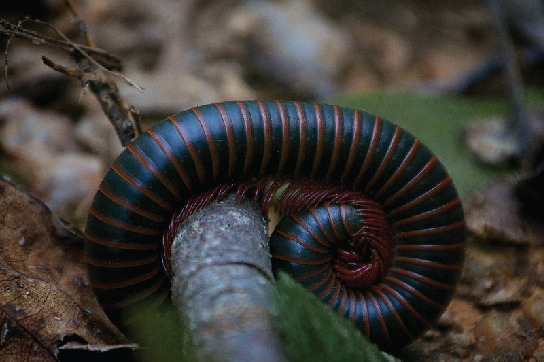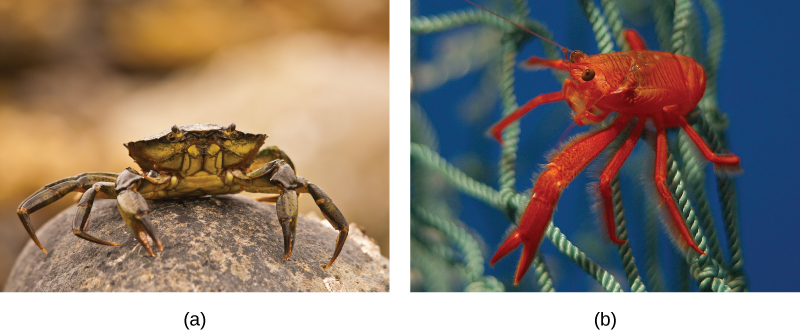| << Chapter < Page | Chapter >> Page > |
Amongst the arthropods, the insects ( [link] ) are the largest class in terms of species diversity as well as biomass in terrestrial habitats. Insects have six legs (three pairs) three body segments: the head, thorax, and abdomen. The thorax bears the wings as well as six legs. Typically, the head bears one pair of sensory antennae, mandibles as mouthparts, a pair of compound eyes, and some ocelli (simple eyes) along with numerous sensory hairs.

Which of the following statements about insects is false?
Myriapods includes arthropods with legs that may vary in number from 10 to 750. This subphylum includes 13,000 species; the most commonly found examples are millipedes and centipedes. All myriapods are terrestrial animals and prefer a humid environment.
Myriapods are typically found in moist soils, decaying biological material, and leaf litter. Subphylum Myriapoda is divided into four classes: Chilopoda, Symphyla, Diplopoda, and Pauropoda. Centipedes like Scutigera coleoptrata ( [link] ) are classified as chilopods. These animals bear one pair of legs per segment, mandibles as mouthparts, and are somewhat dorsoventrally flattened. The legs in the first segment are modified to form forcipules (poison claws) that deliver poison to prey like spiders and cockroaches, as these animals are all predatory. Millipedes bear two pairs of legs per segment and are herbivores or detritivores. ( [link] ).


Crustaceans are the most dominant aquatic arthropods, since the total number of marine crustacean species stands at 67,000, but there are also freshwater and terrestrial crustacean species. Krill, shrimp, lobsters, crabs, and crayfish are examples of crustaceans ( [link] ). Terrestrial species like the wood lice ( Armadillidium spp.) (also called pill bugs, rolly pollies, potato bugs, or isopods) are also crustaceans, although the number of non-aquatic species in this subphylum is relatively low.

The head and thorax of most crustaceans is fused to form a cephalothorax ( [link] ). Crustaceans have a chitinous exoskeleton that is shed by molting whenever the animal increases in size. The exoskeletons of many species are also infused with calcium carbonate, which makes them even stronger than in other arthropods. Crustaceans have an open circulatory system where blood is pumped into the hemocoel by the heart.

Notification Switch
Would you like to follow the 'Bi 101 for lbcc ilearn campus' conversation and receive update notifications?